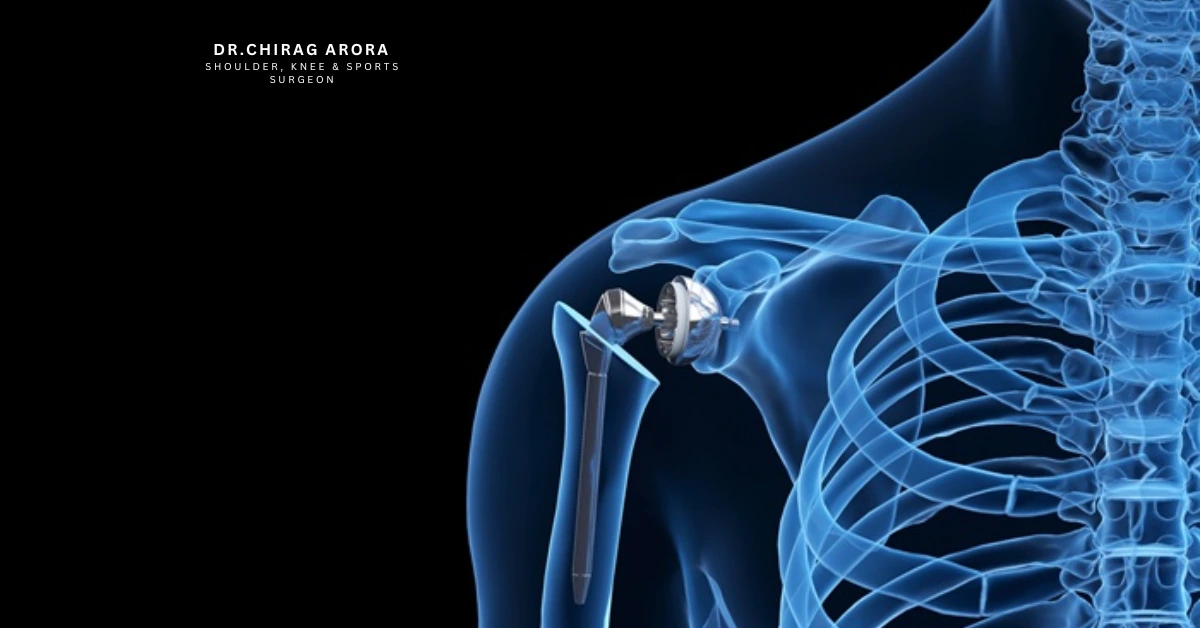Here is a comprehensive guide to shoulder replacement surgery, covering types, indications, preparation, procedure, recovery, and rehabilitation:
What is Shoulder Replacement?
Shoulder replacement, or shoulder arthroplasty, is a surgical procedure where damaged parts of the shoulder joint are replaced with artificial components (prosthesIs). It’s commonly performed to relieve pain and restore function in shoulder affected by arthritis, fractures, or irreparable/severe rotator cuff tears.
Indications for Shoulder Replacement
- Severe osteoarthritis or rheumatoid arthritis
- Post-traumatic arthritis
- Rotator cuff tear arthropathy
- Irreparable cuff tears
- Severe fractures of the shoulder
- Failed previous shoulder surgeries
Types of Shoulder Replacement
| Type |
Description |
Uses |
| Total Shoulder Replacement (Anatomic TSA) | Both humeral head and glenoid are replaced | Arthritis |
| Reverse Shoulder Replacement (RSA) | Ball and socket positions are reversed | Arthritis/Massive rotator cuff tears/fractures |
| Partial Shoulder Replacement (Hemiarthroplasty) | Humeral head is replaced | Fractures or limited joint damage |
| Resurfacing Arthroplasty | Capping of the joint surface | Young, active patients with minimal bone loss |
Preoperative Preparation
- Blood tests, X-rays, MRI/CT scans
- XRAYS AND MRI SCANS (CT SCAN may also be required)
- Medication review (stop blood thinners if advised)
- Pre-anesthesia checkup
- Stop smoking and alcohol
- Plan home modifications for recovery
- PRE-HAB physiotherapy
- Discuss goals and expectations with surgeon and physiotherapist
Surgical Procedure (General Overview)
Duration: 1.5–2 hours
Hospital stay: 1–2 days
Immediate Postoperative Care
- Arm mobilization started same day after surgery (in our practice.
- Stairs climbing 2nd day onwards
- Discharge 2nd day
- Antibiotics for 5 days
- Can resume office work by 5-7th day
- Start gentle passive physiotherapy (as per surgeon’s protocol) from day 1-2
- Pain management (oral and IV meds) for 7-10 days
- Stitches removal after 14 days
- Full range of movement started from day 1
- Monitor for infection, blood clots, nerve injury
Recovery Timeline
| Timeframe | Milestones | |
| Week 1-2 | Pain control, wound care, active assisted ROM ex | |
| Week 2-6 | Gentle assisted ROM exercises, active movementstarted | |
| Week 6-12 |
Start active ROM, mild resistance training |
|
| 3-6 months | Strength training, return to daily activities | |
| >6 months | Early return to activities/sports |
Physical Therapy Goals
- Regain range of motion
- Strengthen rotator cuff and deltoid
- Improve posture and joint protection
- Resume daily and recreational activities safely
Life After Shoulder Replacement
- Most patients achieve significant pain relief and functional improvement
- Activities like swimming, golfing, and light tennis are often possible
- Avoid high-impact sports or heavy lifting permanently
- Regular follow-ups to monitor implant integrity
- Expected ROM shoulder – FF/135, AB/120, ER/IR/45 roughly.
NOTE : These are rough guidelines, we have developed in our practice, over the years. Most of them are rough estimates, there may be variation in relation to complexity of case or as decided by your surgeon.
Consult Dr. Chirag Arora, best orthopedic surgeon in Gurgaon, for expert advice!


